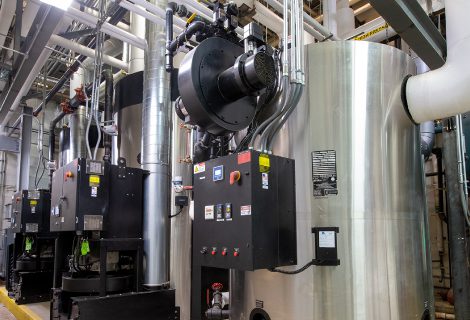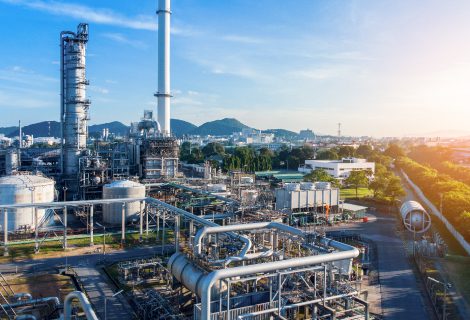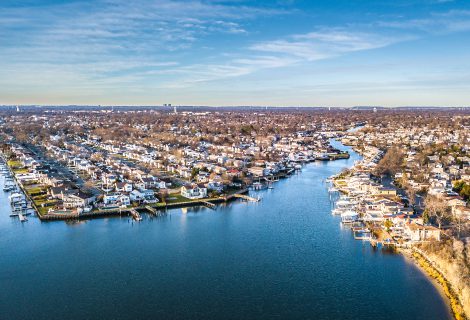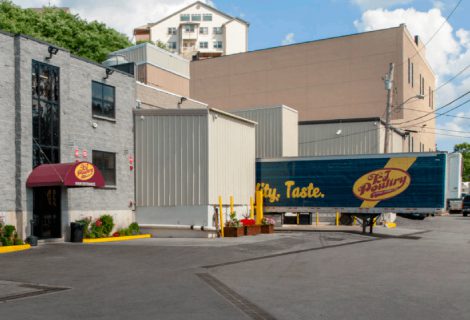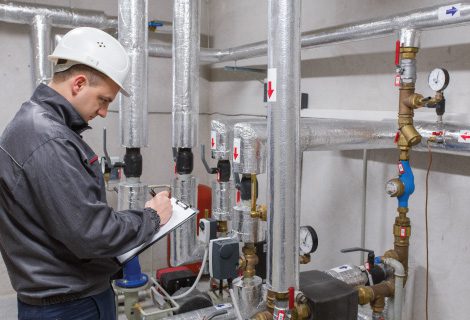Weil-McLain SlimFit vs Weil McLain 94 Boiler
If you’re in the market for a new commercial boiler, you’re most likely choosing between an ultra-efficient condensing boiler like the Weil-McLain SlimFit vs a non-condensing boiler like the Weil-McLain 94. If this explains your choices, we’ve compiled an easy-to-read guide comparing and contrasting the non-condensing vs condensing boilers as well as the two Weil-McLain boilers.
Traditional, Non-Condensing Industrial Boilers
For several decades, companies have turned to traditional non-condensing boilers to receive the right amount of hot water or steam for processing plants, hospitals, schools and other facilities. Non-condensing boilers will have two fuel sources:
- The primary source is natural gas
- The second fuel source will mainly include fuel oil
Non-condensing boilers are designed to move air from the room through an intake to provide combustion and create steam or heat water that is used throughout the facility. Traditionally, all exhaust gases manufactured through the process of combustion will escape through the flue stack. There are multiple types of non-condensing boiler designs for different commercial applications:
- Fire tube non-condensing boilers
- Water tube non-condensing boilers
- Electrical non-condensing boilers
Condensing Industrial Boilers
Condensing boilers have been recently introduced as a more thermally-efficient solution. The most basic condensing boiler design is completely sealed when the air is pulled through the flue from the exterior. The flue gases created are not vented out. Instead, these gases condense and change on the surface of the heat exchanger, and the heat of the condensate is used and recovered. Any remaining condensate liquid is then sent through a waste pipe to be drained.
Some of the most popular condensing boiler models on the market include the Weil-McLain SlimFit and the Weil-McLain SVF.
What’s the Difference between Condensing vs Non-Condensing Boilers?
Overview of Condensing Boilers
- May have higher initial costs
- Are more efficient in long run
- Uses one or more larger heat exchangers
- Exhaust gases are recycled through condensing exchanger
- Lower temperature of combustion products
- Works to combat climate change by lowering CO2 emissions
Overview of Non-Condensing Boilers
- May have lower initial costs
- Can require costly venting
- Has single heat exchanger and single combustion chamber
- Combustion gases are cycled through the flue with 30% of heat being wasted
- Higher temperature of combustion products
- Have a higher carbon footprint
The Weil-McLain SlimFit Condensing Boiler
The Weil-McLain SlimFit condensing commercial boiler boasts being the easiest and fastest heating solution for industrial and commercial retrofits that have limited access or space. The SlimFit is offered in two separate model groups:
- 550 MBH – 750 MBH Condensing Boiler
- 1,000 MBH – 2,000 MBH Condensing Boiler
The SlimFit has a short width of a mere 18 inches and weighs less than 550 pounds, which makes it ideal for small elevators, difficult access to mechanical room, and narrow hallways. In addition, this boiler boasts easy on-site installation and startup.
It comes completely tested, wired, factory assembled and programmed. However, one of the most notable attributes of the SlimFit is its exceptional efficiency of over 94%. As a greener solution, the SlimFit uses less fuel, which can help lower operating costs.
Depending on the unit, the SlimFit comes with either a 3.5-inch or 7-inch color-coded, intuitive LCD display. At the same time, it offers a full range of attributes, such as:
- Multiple boiler functionality
- Maintenance reminders
- Adjustable priorities and maintenance reminders
- Freeze protection
- Warm weather shutdown
- And several other features
- The Weil-McLain 94 Non-Condensing Boiler
The Weil-McLain 94 is an ultra-reliable, heavy-duty, traditional cast-iron boiler engineered for offices, schools, apartments, and other types of institutional and commercial facilities. This commercial boiler is available for steam or hot water in a total of 18 sizes ranging from 1,763.5 MBH up to 6,060.9 MBH. The 94 is offered with three different burners:
- A light oil burner
- Gas and light oil combo burner
- Power gas burner
You can also opt for the boiler only setup for use with heavy oil burners that are approved by Weil-McLain. In addition to flexibility in fuel, the 94 offers complete installation flexibility. You can choose it as a factory fire-tested and completely-assembled package boiler, with factory-assembled sections, or in individual sections. The 94 features a forced-draft firing rate at more than 80% operating efficiency and is enhanced by excellent construction features and design features, like:
- The patented section sealing method
- Several tankless water heaters
- Insulated steel jacket
- Hydro-Wall wet-base design
- Integrated air eliminator in water boilers
- Easy cleaning provision
- No-refractory, simplified piping combustion course
- The ever reliable Weil-McLain cast iron construction
When it comes to choosing between a non-condensing boiler like the 94 vs a condensing boiler like the SlimFit, there are several different considerations you should make. Fortunately, you don’t have to do it alone. The experts at ATI of NY can help!
We offer decades of experience helping business owners across all industries make informed and educated decisions on boiler room equipment. As the authorized manufacturer’s representatives for the leading producers in the world, our team will meet your needs and exceed your expectations.


